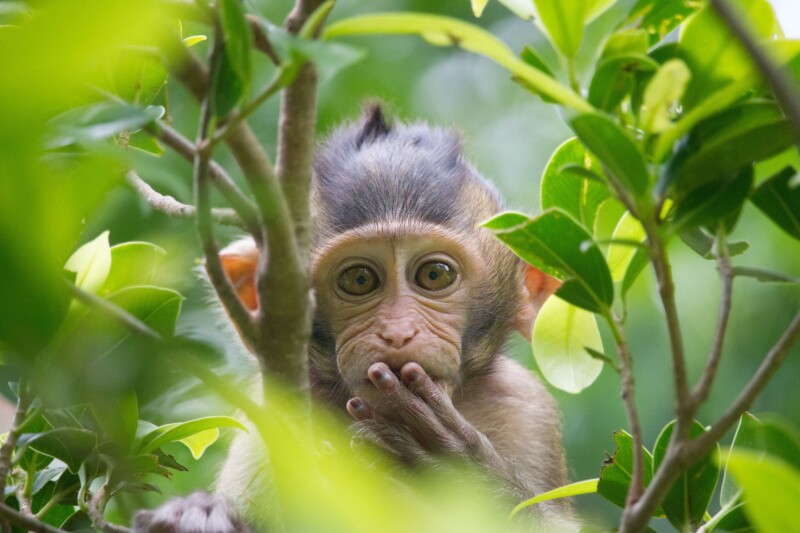Kyasanur Forest Disease (KFD), or Monkey Fever, is a type of viral hemorrhagic fever spread by ticks that have been infected. While it predominantly impacts monkeys, humans can also contract the disease through bites from these infected ticks or direct contact with an infected animal.
What is monkey fever?
Monkey fever is triggered by the KFD virus, a type of arbovirus that primarily affects monkeys and rodents, as per the Indian Journal of Medical Research. The disease got its name from the Kyasanur forest in India, which is the location where the first case was identified.
In the Uttara Kannada district of Karnataka, there have been 31 reported instances of KFD, resulting in two fatalities. The State Health Department is preparing strategies to prevent the disease from spreading further.
Is monkey fever spreadable?
Kyasanur Forest Disease, often referred to as Monkey Fever, is primarily spread through the bites of ticks from the Haemaphysalis genus, especially the Haemaphysalis spinigera species. These ticks usually feed on monkeys, making them the primary hosts. As these infected monkeys move through forest areas, they assist in spreading the virus in new regions.
If bitten by these infected ticks or through direct contact with the blood of infected animals, humans may catch the disease. There’s also a risk of infection when handling objects contaminated with the virus. However, human-to-human transmission of the KFD virus is uncommon.
Symptoms of monkey fever
Monkey fever has an incubation period lasting between 3 to 8 days. Some early signs are:
- Fever
- Chills
- Headaches
- Intense muscle pain
- Vomiting
- Gastrointestinal issues
- Bleeding issues within 3 to 4 days of the first symptoms
- Low blood pressure
- Decreased platelet, red blood cell, and white blood cell count
Furthermore, you may experience a two-phase progression of the illness. Initially, after 1 to 2 weeks of experiencing symptoms, you may be affected with a second wave characterized by fever and neurological symptoms, such as intense headaches, mental disturbances and vision issues.
How is monkey fever caused?

Monkey fever is caused by the Kyanasanur Forest disease virus (KFDV), a part of the Flaviviridae virus family. It was first identified in the Kyasanur Forest of Karnataka from the body of a monkey in 1957. It was later found that a human can contract it through tick bites or contact with an infected animal.
While there is no cure for monkey fever at present, you can take certain proactive steps to avoid ticks and, in turn, monkey fever:
- Wear long-sleeved clothes and cover yourself well to minimize skin exposure.
- Use insect repellents on exposed areas of skin and clothes.
- Avoid contact with infected animals.
While there are no specific treatment plans for monkey virus, if you experience any of the symptoms discussed above, visit a hospital and get yourself checked immediately. Prevention is always better than cure.
Key Takeaways
- Monkey fever is triggered by the KFD virus, which primarily affects monkeys and rodents.
- Fever, chills, and headaches are a few symptoms.
- It is caused by the Kyanasanur Forest disease virus (KFDV).
Stay tuned to the Activ Living Community. Keep up to date with the latest health tips and trends through expert videos, podcasts, articles, and much more in nutrition, fitness, mindfulness, and lifestyle conditions like Asthma, Blood Pressure, Cholesterol, and Diabetes. Activ Living ke saath sahi sehat ki shuruaat ABHIkaro.
You may also be interested in the following blogs:
- How Does Insulin Therapy Make Life Easier?
- Sedentary Lifestyle And Diabetes: Transform Passive Life To Active Life
Popular Searches
How to lower blood pressure | Fruits good for liver | Unhealthy foods | Ragi Benefits | Basal Metabolic Rate | Acupressure points for High Blood Pressure | Ayurvedic medicine for blood pressure | How to control cholesterol at home | Homeopathy for Asthma | Biological Age | Home remedies for TB | Natural beta blockers | Negative effects of internet | Types of walking | Blood pressure calculator | Blood sugar calculator | BMI Calculator





 1800-270-7000
1800-270-7000






